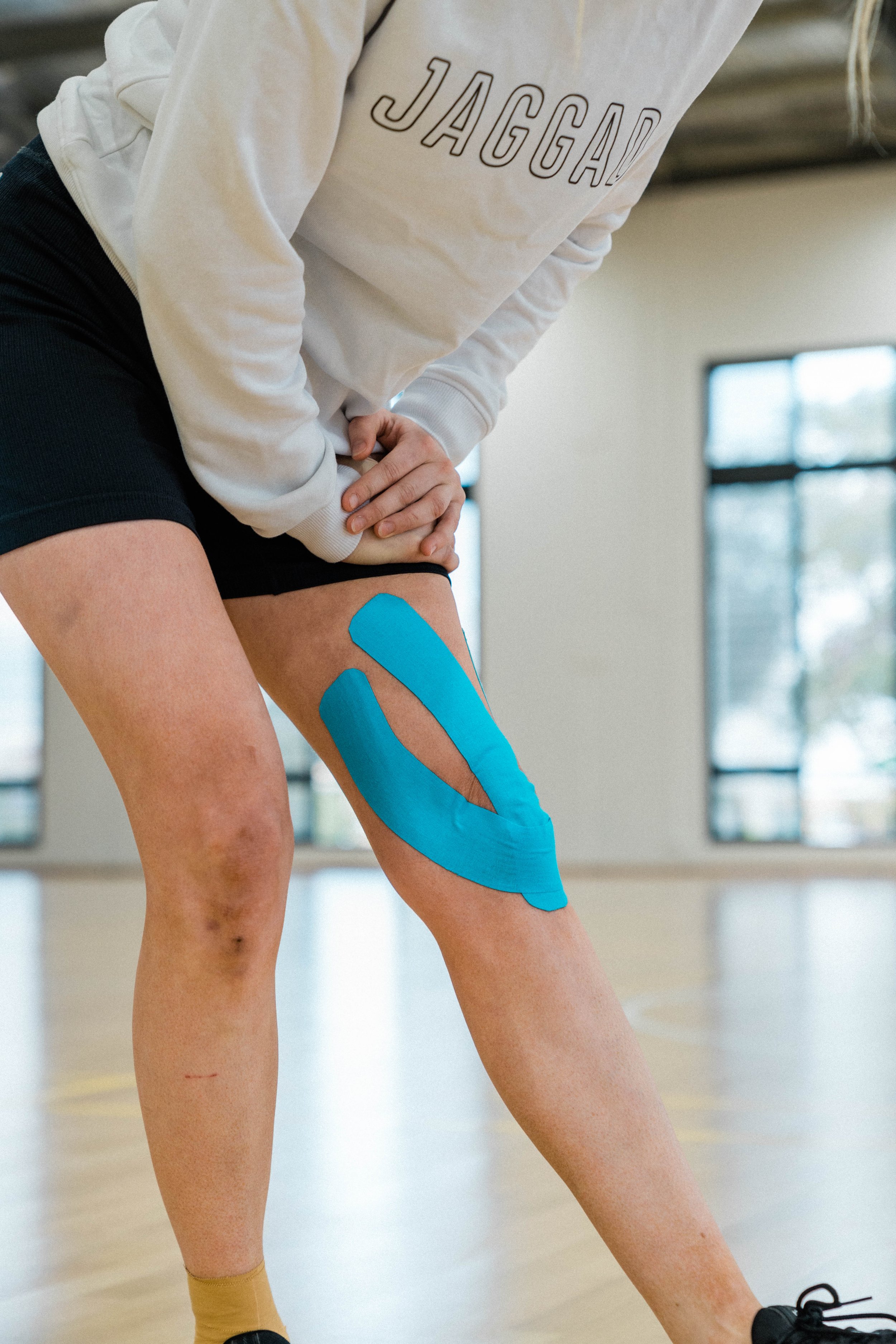Knee strapping with kinesiology tape
How to strap a knee using kinesiology tape. Find out more below.
How do knee sprains or strains occur sports?
Knee injuries are common in sports that require running, jumping and change in directions. These sports can include; AFL, Rugby, Netball, Basketball, Soccer etc…
There are many tendons, ligaments & muscles that cross over the knee joint, that provides support and function. Injuries occur when internal and external forces are applied beyond what your knee structures can tolerate.
Why would you tape your knee?
Taping will not resolve your knee pain, however it can provide feedback to your brain, to tell it where your knee is positioned. This will allow your body to be mindful of your knee, to avoid a reoccurrence of injury. It is important to follow healthcare advice to manage your injury, with appropriate rehabilitation to strength the muscles around your knee joint and lower limb. Taping is a protective equipment to aid your recovery from injury, it should be relied on to help you return to sports or activities.
Simple steps to strapping your knee:
1. Prepare 2 x tapes (1 x 15cm & 1 x 30cm).
2. Have the knee slightly bent (tip: use a rolled-up towel under the knee).
3. Place the 15cm tape at 2-fingers width below the knee cap.
4. Apply mild stretch and pull upwards towards the thigh over the knee cap. Then press the tape into the skin, while continually apply upwards pull onto the thigh.
5. Place 30cm tape horizontally with the middle of the tape directly over or slightly under the knee cap.
6. Angle the tape upwards on either side of the thigh. Press tape down firmly to avoid creases.
7. Stand your athlete up and ask them to move around. The knee cap should feel firmly supported.
TIPS:
· Always check the skin before applying tape
· Look out for any: redness, swelling, bruises, blisters, cuts, burns and other wounds on the skin.
· Seek medical attention if there is active bleeding, or signs of wound not healing.
· Before application; keep skin dry (i.e., no moisturiser or lotion) and reduce hair at the site. This can reduce the effectiveness of the tape to stay on the skin.
· Be in a comfortable position before applying the tape. Often sitting up with an outstretched leg is preferred.
Click this link below to watch the steps:
HEALTH NOTICE: Please note that the tips and advice provided on this website by no means replace medical advice and treatment. If you have, suspect a health problem or if symptoms persist consult a doctor and your healthcare professional.
References: Brukner.p,Khan. K. Clincial Sports Medicine. 4th ed. McGraw Hill Professional. 2014. 8-25p.


